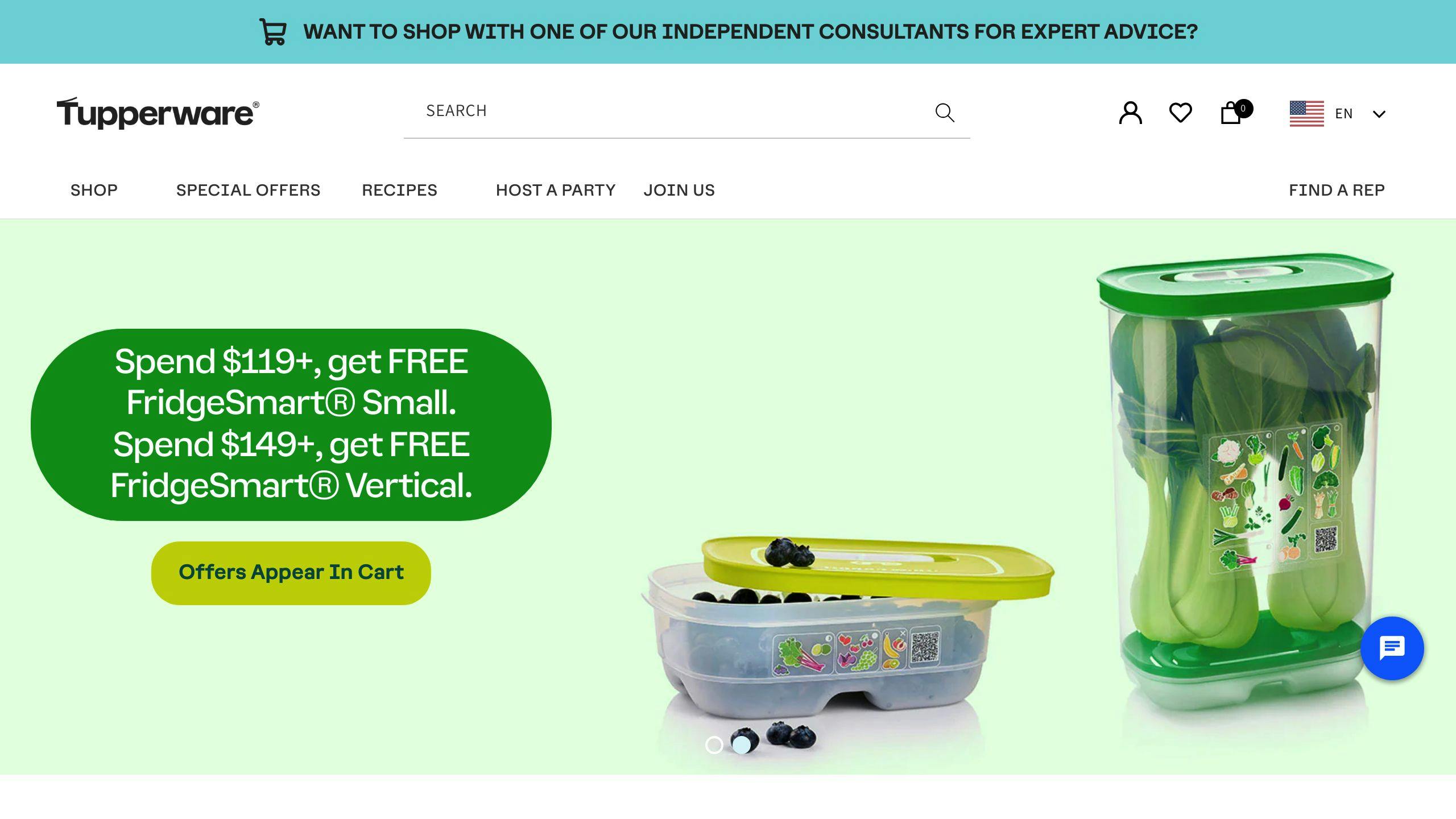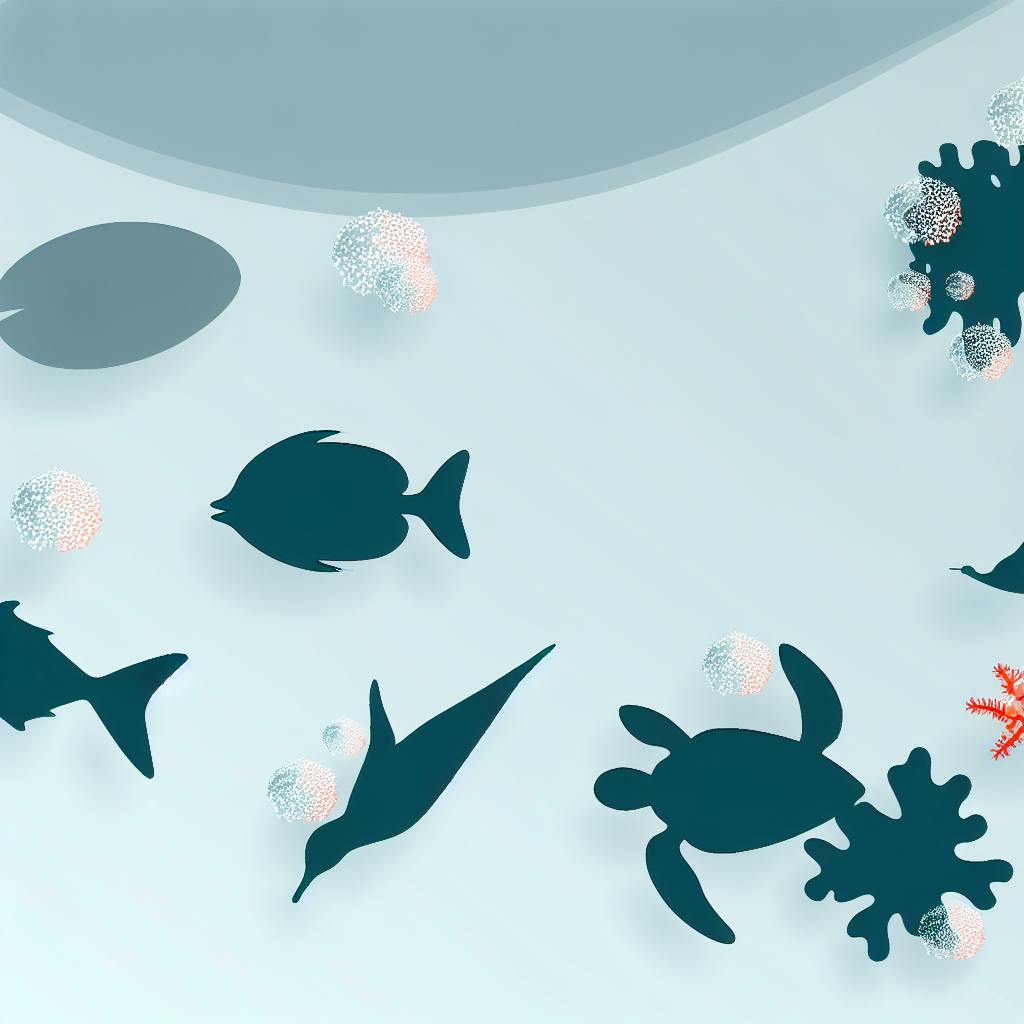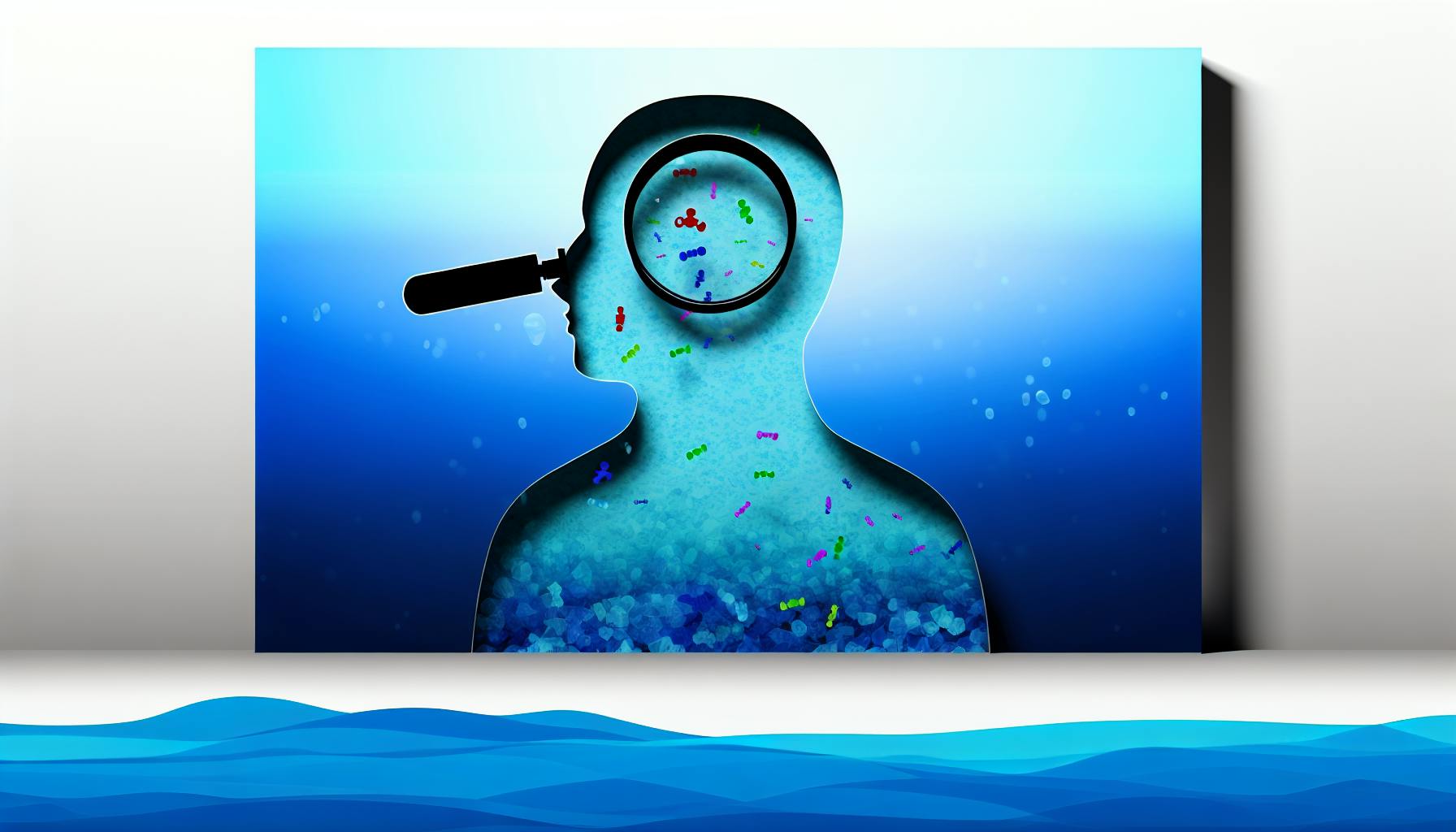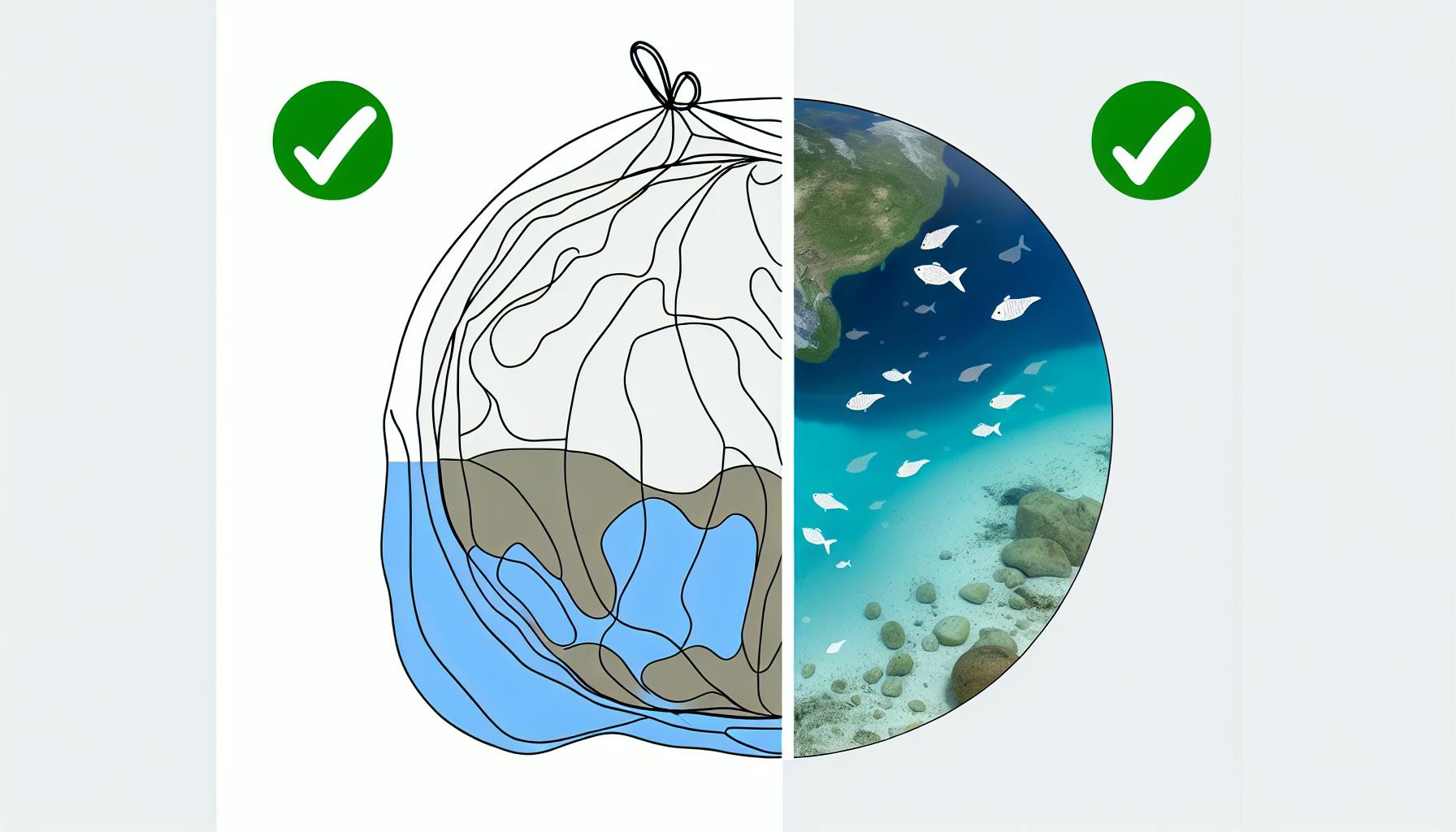Microplastics are tiny plastic particles that can contaminate our food and water when using plastic containers like Tupperware. These microplastics pose potential health risks, including respiratory issues, neurotoxicity, oxidative damage, and reproductive harm. Here's what you need to know:
-
Safer Container Options
- Glass Containers: Won't leach chemicals or microplastics into food
- Stainless Steel Containers: Durable, long-lasting, easy to clean
- Silicone Containers: Heat-resistant, won't release microplastics
-
Tips for Using Plastic Containers Safely
- Avoid heating plastic containers, as high temperatures can cause microplastics and chemicals to leach into food
- Don't store acidic foods in plastic containers, as they can cause the plastic to break down faster
- Replace worn, scratched, or cracked plastic containers, as they're more likely to shed microplastics
- Hand-wash plastic containers instead of using the dishwasher to prevent degradation from high heat
-
- Use reusable bags, water bottles, and containers for takeout and bulk items
- Choose products with minimal or no plastic packaging
-
Taking Action
- Support organizations advocating for stricter regulations on plastic production and use
- Contact policymakers to prioritize policies promoting sustainable alternatives and addressing microplastic pollution
- Raise awareness about the dangers of microplastics and the importance of eco-friendly choices
By making informed choices and using sustainable alternatives, we can reduce our exposure to microplastics and protect our health and the environment.
Related video from YouTube
Quick Comparison: Plastic Container Types and Microplastic Release Potential
| Container Type | Microplastic Release Potential |
|---|---|
| Polyethylene | High |
| Polypropylene (used in Tupperware) | Moderate |
| BPA-free Plastics | Low |
Microplastics in Tupperware

What are Microplastics?
Microplastics are tiny plastic pieces less than 5mm in size. They form when larger plastic items break down over time.
Why Microplastics Release from Tupperware
Several factors cause microplastics to release from plastic containers like Tupperware:
- Heat: High temperatures, like microwaving or dishwashing, can degrade plastic and release microplastics.
- Age: Older containers are more likely to break down and shed microplastics due to wear and tear.
- Plastic Type: Some plastics, like polypropylene and polystyrene, release more microplastics than others.
Health Risks of Ingesting Microplastics
Ingesting microplastics may lead to:
- Hormone Issues: Chemicals in plastics can disrupt hormones, potentially causing reproductive problems, developmental issues, and increased cancer risk.
- Inflammation: Microplastics can cause inflammation in the respiratory system when inhaled and digestive tract when ingested.
- Chronic Diseases: Some studies suggest a link between microplastic exposure and increased risk of cardiovascular disease and metabolic disorders, but more research is needed.
- Neurotoxicity: Certain chemicals in microplastics may damage the brain and nervous system.
- Oxidative Stress: Microplastics can induce oxidative stress, damaging cells and tissues in the body.
While the full health impact is still being studied, reducing exposure to microplastics from food containers and other sources is important to minimize potential harm.
Microplastic Release from Tupperware
| Factor | Description |
|---|---|
| Heat | High temperatures from microwaving or dishwashing can degrade plastic and release microplastics. |
| Age | Older plastic containers are more prone to breaking down and shedding microplastics due to wear and tear. |
| Plastic Type | Some plastics, like polypropylene and polystyrene, are more likely to release microplastics compared to others. |
Where Do Microplastics Come From?
Common Kitchen Sources
One of the main sources of microplastic exposure in the kitchen is plastic food containers like Tupperware. As these containers get older and wear down from heat, scratches, and regular use, they can release tiny plastic particles into your food. Other common sources include plastic wrap, plastic cutting boards, and plastic cooking utensils.
Plastic Container Comparison
Different types of plastic containers have varying chances of releasing microplastics. Here's a quick comparison:
| Container Type | Microplastic Release Potential |
|---|---|
| Polyethylene | High |
| Polypropylene | Moderate |
| BPA-free Plastics | Low |
Polyethylene containers, often used for disposable food packaging, tend to release more microplastics. This is because they have a lower melting point and are more likely to break down. Polypropylene, commonly used in reusable containers like Tupperware, has a moderate release potential. BPA-free plastics, while not entirely risk-free, are less likely to shed microplastics compared to other plastic types.
Understanding the Risks
Vulnerable Groups
Some people face higher risks from microplastics:
-
Children: Babies and young kids may ingest more microplastics through hand-to-mouth behavior, plastic toys, and bottles. This exposure during key growth stages could have lasting effects.
-
Pregnant Women: Microplastics may cross the placenta, exposing the developing baby.
-
Those with Health Issues: People with respiratory or digestive conditions may be more sensitive to the inflammatory effects of ingesting or inhaling microplastics.
Long-term Health Impacts
While more research is needed, microplastics may pose these long-term risks:
| Potential Issue | Description |
|---|---|
| Digestive Problems | Microplastics could cause gut inflammation, irritation, and disrupt healthy gut bacteria, possibly increasing cancer risk. |
| Reproductive Harm | Animal studies show microplastics may reduce sperm quality, testosterone levels, and fertility. |
| Nervous System Effects | Some microplastics contain chemicals that may interfere with the brain and nervous system, potentially causing cognitive or neurological issues. |
| Hormone Disruption | Microplastics and associated chemicals could mimic or disrupt hormones, leading to imbalances and related health problems. |
Environmental Consequences
Microplastic pollution also harms the environment:
-
Bioaccumulation: Microplastics build up in marine life and may reach humans through seafood.
-
Ecosystem Disruption: Microplastics can harm aquatic organisms and disrupt food webs.
-
Soil and Crop Contamination: Sewage sludge, plastic mulch films, and contaminated water may expose agricultural fields and crops to microplastics.
-
Air Pollution: Airborne microplastics contribute to indoor and outdoor air pollution, posing respiratory risks.
Addressing microplastic pollution requires efforts from individuals, industries, and policymakers to protect human health and the environment.
sbb-itb-1dc3f59
Reducing Microplastic Exposure
Safer Container Options
Ditch plastic containers and switch to safer, more eco-friendly alternatives to cut down on microplastic exposure:
-
Glass Containers: Glass is inert and won't leach chemicals into your food. Look for glass containers with tight-fitting lids for storing leftovers, packing lunches, and meal prepping.
-
Stainless Steel Containers: Durable and long-lasting, stainless steel containers are another excellent plastic-free option for food storage. They're easy to clean and won't absorb flavors or odors.
-
Silicone Containers: Flexible and heat-resistant, silicone containers are a great alternative to plastic for storing, freezing, and reheating food. Choose 100% pure silicone products without fillers.
Using Plastic Containers Safely
If you must use plastic containers, follow these tips to minimize microplastic exposure:
| Tip | Explanation |
|---|---|
| Avoid Heating Plastic | Never microwave or heat food in plastic containers, as high temperatures can cause chemicals to leach into your food. |
| Don't Store Acidic Foods | Acidic foods like tomato sauce can cause plastic to break down faster, leading to microplastic contamination. |
| Replace Worn Containers | Discard any plastic containers that are scratched, cracked, or showing signs of wear, as they're more likely to shed microplastics. |
| Hand-Wash Plastic | Avoid putting plastic containers in the dishwasher, as the high heat can cause them to degrade faster. |
Reducing Single-use Plastics
One of the best ways to minimize microplastic exposure is to reduce your reliance on single-use plastics:
-
Use Reusable Bags: Carry reusable bags for shopping to avoid plastic grocery bags.
-
Bring Your Own Containers: When getting takeout or buying bulk items, bring your own reusable containers to skip the single-use plastic packaging.
-
Switch to Reusable Water Bottles: Invest in a high-quality reusable water bottle made of glass or stainless steel to ditch plastic water bottles.
-
Choose Package-Free Products: Look for products with minimal or no plastic packaging, such as loose fruits and vegetables, bulk dry goods, and package-free personal care items.
Taking Action Against Microplastics
Simple Tips
1. Use Glass or Stainless Steel Containers: Replace plastic containers with glass or stainless steel ones. These materials won't release microplastics into your food, even when heated.
2. Don't Heat Plastic: Never microwave or heat food in plastic containers. High temperatures can cause microplastics and chemicals to leach into your meals. If using plastic, transfer the contents to a glass or ceramic dish before heating.
3. Reduce Single-Use Plastics: Carry reusable bags, water bottles, and containers for takeout and bulk items. This simple step cuts down on microplastic exposure and helps the environment.
4. Hand-Wash Plastic Containers: If you use plastic containers, hand-wash them instead of using the dishwasher. The high heat and harsh detergents in dishwashers can cause plastic to degrade faster, leading to more microplastic shedding.
Choosing Wisely
When buying food storage containers, make informed choices:
-
Read Labels: Look for containers made from high-quality materials like borosilicate glass, stainless steel, or pure silicone. Avoid plastics labeled with recycling codes 3, 6, and 7, as these can contain harmful chemicals.
-
Check for Certifications: Choose containers certified as BPA-free, phthalate-free, and free from other toxic additives. Look for reputable third-party certifications like Cradle to Cradle or MADE SAFE.
-
Prioritize Durability: Invest in durable, long-lasting containers that won't easily scratch, crack, or degrade over time, as damaged containers are more likely to shed microplastics.
-
Support Eco-Friendly Brands: Research and support companies committed to sustainability and reducing plastic waste through innovative product design and responsible manufacturing practices.
Taking Action
While individual actions are essential, tackling the microplastic crisis requires collective efforts and policy changes:
-
Support Organizations: Get involved with environmental organizations advocating for stricter regulations on plastic production, use, and disposal to reduce microplastic pollution.
-
Contact Policymakers: Write to your local representatives and government officials, urging them to prioritize policies that promote sustainable alternatives and address microplastic pollution.
-
Raise Awareness: Use your voice to educate others about the dangers of microplastics and the importance of making eco-friendly choices. Share information on social media, attend community events, or start a local initiative.
Conclusion
The tiny plastic particles from Tupperware and other food containers are a major issue. These microplastics can build up in our bodies and the environment, causing potential health problems and harming nature.
We can reduce our exposure to microplastics by making smart choices and using sustainable options:
-
Replace plastic containers: Switch to glass, stainless steel, or silicone containers. These materials won't release microplastics into your food.
-
Avoid heating plastic: Never microwave or heat food in plastic containers. High temperatures can cause microplastics and chemicals to leach into your meals.
-
Reduce single-use plastics: Use reusable bags, water bottles, and containers for takeout and bulk items. This cuts down on microplastic exposure and helps the environment.
-
Hand-wash plastic containers: If you use plastic containers, hand-wash them instead of using the dishwasher. The high heat and harsh detergents can cause plastic to degrade faster, leading to more microplastic shedding.
| Safer Container Options | Benefits |
|---|---|
| Glass Containers | Inert, won't leach chemicals into food |
| Stainless Steel Containers | Durable, long-lasting, easy to clean |
| Silicone Containers | Flexible, heat-resistant, 100% pure silicone |
While individual actions are important, tackling the microplastic crisis requires collective efforts and policy changes:
-
Support organizations: Get involved with environmental groups advocating for stricter regulations on plastic production, use, and disposal.
-
Contact policymakers: Write to your local representatives and government officials, urging them to prioritize policies that promote sustainable alternatives and address microplastic pollution.
-
Raise awareness: Educate others about the dangers of microplastics and the importance of making eco-friendly choices. Share information, attend community events, or start a local initiative.
FAQs
Should I avoid plastic Tupperware?
It's best to limit the use of plastic Tupperware containers, especially for hot foods or beverages. As plastic ages and degrades, it can release tiny plastic particles (microplastics) and potentially harmful chemicals into your food. To reduce exposure, consider switching to safer alternatives like glass, stainless steel, or silicone containers. These materials won't leach microplastics or toxins into your meals.
Are all plastic containers bad for you?
Not all plastic containers pose the same level of risk, but it's wise to exercise caution. Older or worn-out plastic containers are more likely to break down and release microplastics and chemicals into your food, even at room temperature. Additionally, some types of plastics, like those containing phthalates or BPA, are known to be more hazardous to human health. To be on the safer side, consider switching to non-plastic alternatives, especially for storing hot foods or beverages.
| Safer Container Options | Benefits |
|---|---|
| Glass Containers | Won't leach chemicals or microplastics into food |
| Stainless Steel Containers | Durable, long-lasting, easy to clean |
| Silicone Containers | Heat-resistant, won't release microplastics |
Tips for Using Plastic Containers Safely
If you must use plastic containers, follow these tips to minimize microplastic exposure:
- Avoid Heating Plastic: Never microwave or heat food in plastic containers, as high temperatures can cause chemicals and microplastics to leach into your food.
- Don't Store Acidic Foods: Acidic foods like tomato sauce can cause plastic to break down faster, leading to microplastic contamination.
- Replace Worn Containers: Discard any plastic containers that are scratched, cracked, or showing signs of wear, as they're more likely to shed microplastics.
- Hand-Wash Plastic: Avoid putting plastic containers in the dishwasher, as the high heat can cause them to degrade faster.


